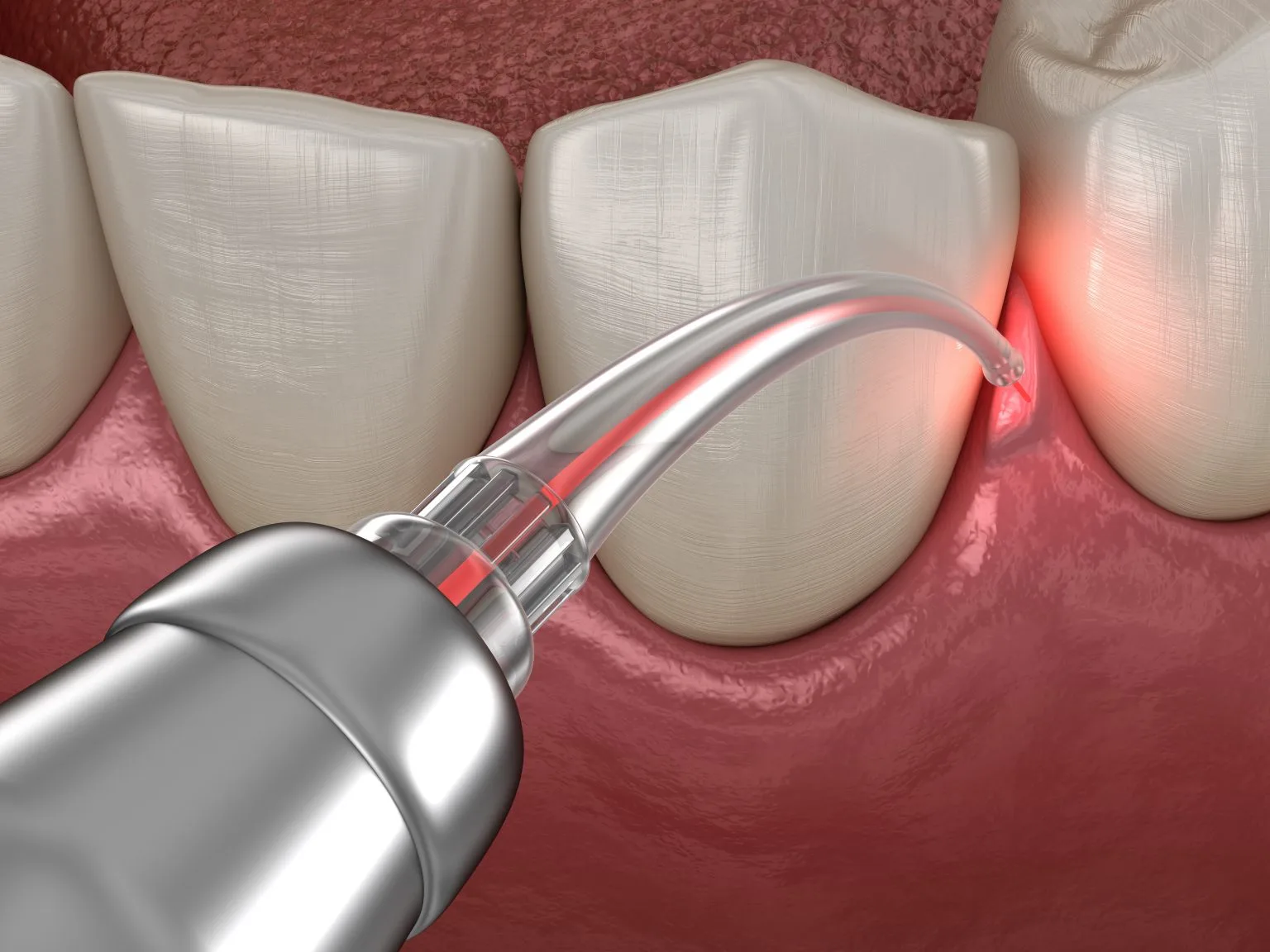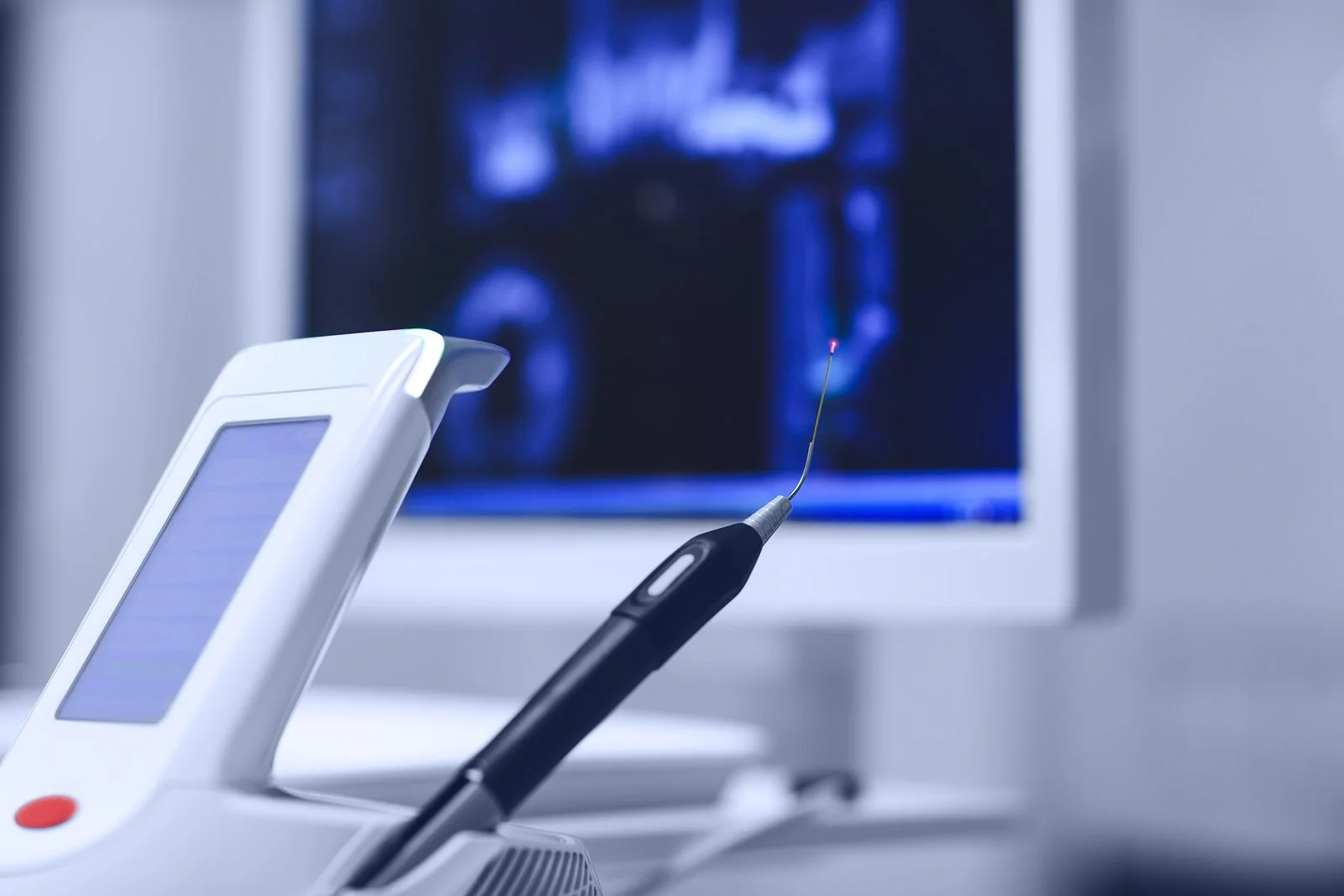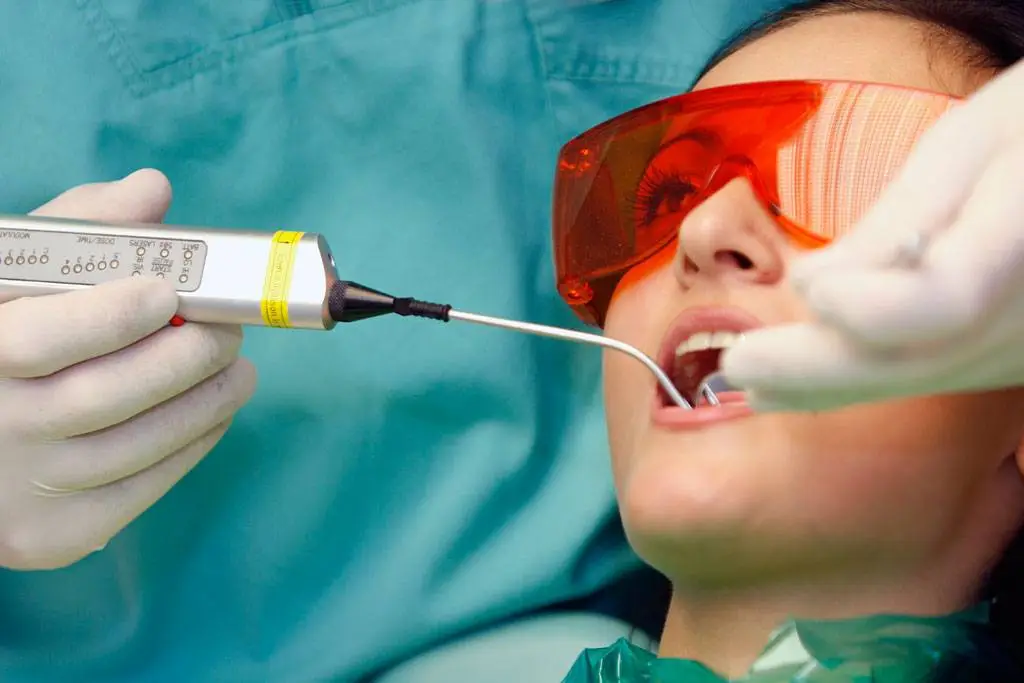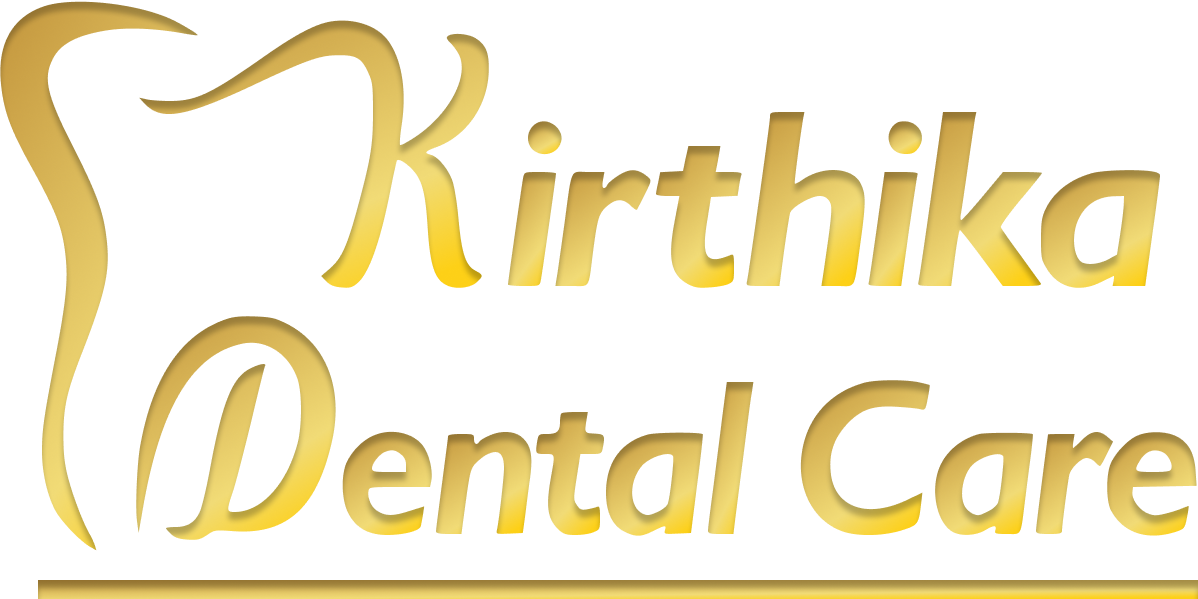
Introduction
Laser dentistry is an effective and precise way of performing various dental procedures. Laser dentistry has the potential to improve various dental procedures, but all depends on the personnel skill of the dentist i.e. his ability and skill to control the exposure of laser on the gum as well as the teeth surface, and control over power output. Special care is required as the laser should not damage the surrounding tissues.

What are the benefits of laser dentistry?
Some benefits of laser dentistry are:-
- It does not damage the surrounding tissues
- Some laser dentistry procedures are done without anesthesia
- Chances of bacterial infection are less because the area on which work is done is exposed to high light beam
- The procedures which use soft tissues laser do not require stitches
- There is very less bleeding, because high light beam results in clotting of blood which reduces blood loss.
- Wounds heal up faster and there is regeneration of tissues.
How does the dentist use the technique of laser dentistry?
The laser energy is absorbed by molecules of water present in the tissues. The laser energy causes an explosion because the water molecules expand which in turn moves apart the tissue particle.
Does laser dentistry help in curing gum diseases?

How much recovery time is required after laser gum treatment?
Laser automatically forms clots/it seals the blood vessels as well the nerve ending. One can return back to work immediately after the treatment and there is no down time. Hence it is very convenient and comfortable for the patient as there is no recovery time.
What are the advantages of laser?
- Gum disease: Lasers are used to reshape gums and remove bacteria during root canal procedures.
- Biopsy or lesion removal: Lasers can be used to remove a small piece of tissue (called a biopsy) so that it can be examined for cancer. Lasers are also used to remove lesions in the mouth and relieve the pain of canker sores.
- Teeth whitening: Lasers are used to speed up in-office teeth whitening procedures. A peroxide bleaching solution, applied to the tooth surface, is ''activated" by laser energy, which speeds up of the whitening process.
- Root canal debridement: Lasers used in killing the bacteria present in the root canal during the RCT procedure.
Copyright © Kirthika Dental Care Is Proudly Owned by Macincode
